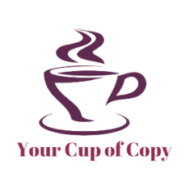You need a content calendar if you’re serious about leveraging LinkedIn to grow your network and influence. LinkedIn is more than just a place to upload your résumé and network with colleagues. It’s a vibrant platform where professionals share insights, engage in discussions, and build their personal brands. Here’s how to create one that ensures consistency and regular engagement.
Why Consistency Matters
Consistency is key on LinkedIn. Regularly posting content keeps your profile visible, shows you’re active in your field, and helps establish your expertise. People who see your content frequently are likelier to remember you and engage with your posts, leading to new connections and opportunities.
Step 1: Define Your Goals
Start by setting clear goals for your LinkedIn presence. Are you looking to expand your network, demonstrate expertise, or promote your business? Your goals will shape the type of content you post and how often you post it.
Step 2: Identify Your Audience
Know who you’re speaking to. Are they industry peers, potential clients, or referral partners? Understanding your audience’s interests and pain points will help you create relevant content that resonates with them.
Step 3: Choose Your Content Mix
A LinkedIn content calendar should include various content types to keep things interesting. Here are some examples:
- Original Articles: Share your insights and expertise through LinkedIn’s publishing platform.
- Shared Articles: Share industry-related articles and add your commentary.
- Company Updates: Keep your network informed about your company’s latest news and achievements.
- Personal Stories: Share your professional journey or lessons learned to create a personal connection.
- Engagement Posts: Ask questions or start discussions to encourage interaction.
Step 4: Decide on Frequency
How often should you post? It depends on your goals and available time, but a good starting point is two to three times per week. This frequency ensures you’re staying active without overwhelming your network. Remember, quality is more important than quantity.
Step 5: Create a Content Calendar
Now that you have your content mix and frequency create a calendar. You can use tools like Google Sheets, Trello, or dedicated content calendar apps to organize your posts. Here’s a simple format:
- Date: The day you plan to post.
- Content Type: Original article, shared article, etc.
- Topic: The subject of your post.
- Additional Notes: Links, references, or special mentions.
Step 6: Stick to the Schedule
Consistency is the name of the game, so stick to your schedule as much as possible. To ensure you’re on track, set reminders for posting days and schedule content in advance using tools like Hootsuite or Buffer.
Step 7: Measure and Adjust
Finally, track your LinkedIn engagement to see which posts perform best. Use LinkedIn’s analytics tools to measure likes, comments, shares, and new connections. This data will help you refine your content calendar to focus on what resonates with your audience.
By following these steps, you’ll have a structured LinkedIn content calendar that keeps your profile active and engaging. Consistency in posting, a well-balanced mix of content, and regular measurement of your results will ensure that you stay on track and maintain a dynamic presence on the platform. Whether you’re sharing insights, starting discussions, or showcasing your expertise, your content calendar will guide you in connecting with your audience and achieving your LinkedIn goals.
Ready to improve your LinkedIn profile? Download our free guide, “Elevate Your LinkedIn Profile: An Assessment for Entrepreneurs, Coaches, and Creatives.” This comprehensive assessment will help you identify key areas for improvement.
Whether you’re an entrepreneur, business coach, or creative professional, this guide is designed to help you stand out and make meaningful connections.

